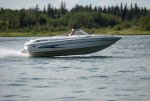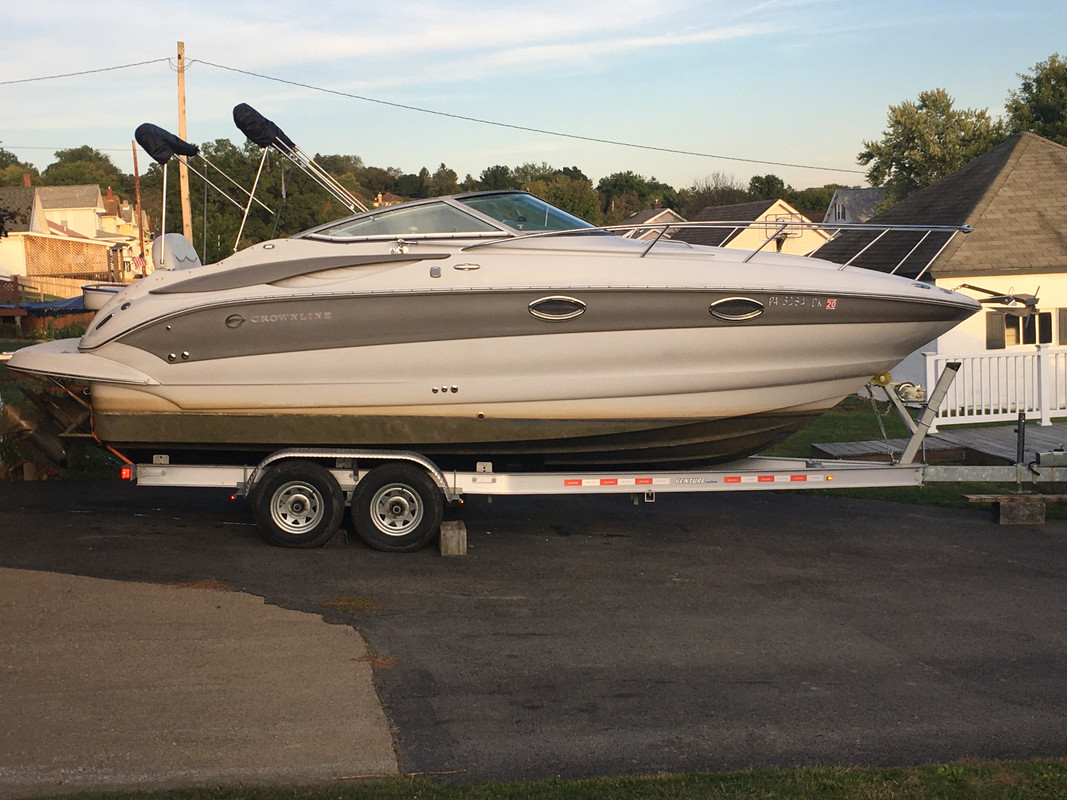jimmbo
Supreme Mariner
- Joined
- May 24, 2004
- Messages
- 12,961

Another pic of mine, taken immediately before the one above, it shows both the chine and outer strake both out of the water at the transom
Where on the hull do the bunks make contact? From the keel to the strake, the hull should be straight, and the bunks should go to the transom. If the bunks are located between the strake and the chine, the trailer is not set up correctly. If you have 2(your case 3) sets of bunks, the ones between the keel and chine should go to the transom, then the outer ones can, and should be forward of the hook
A photo of the transom area of you boat/trailer in question would help a lot
Last edited:






















